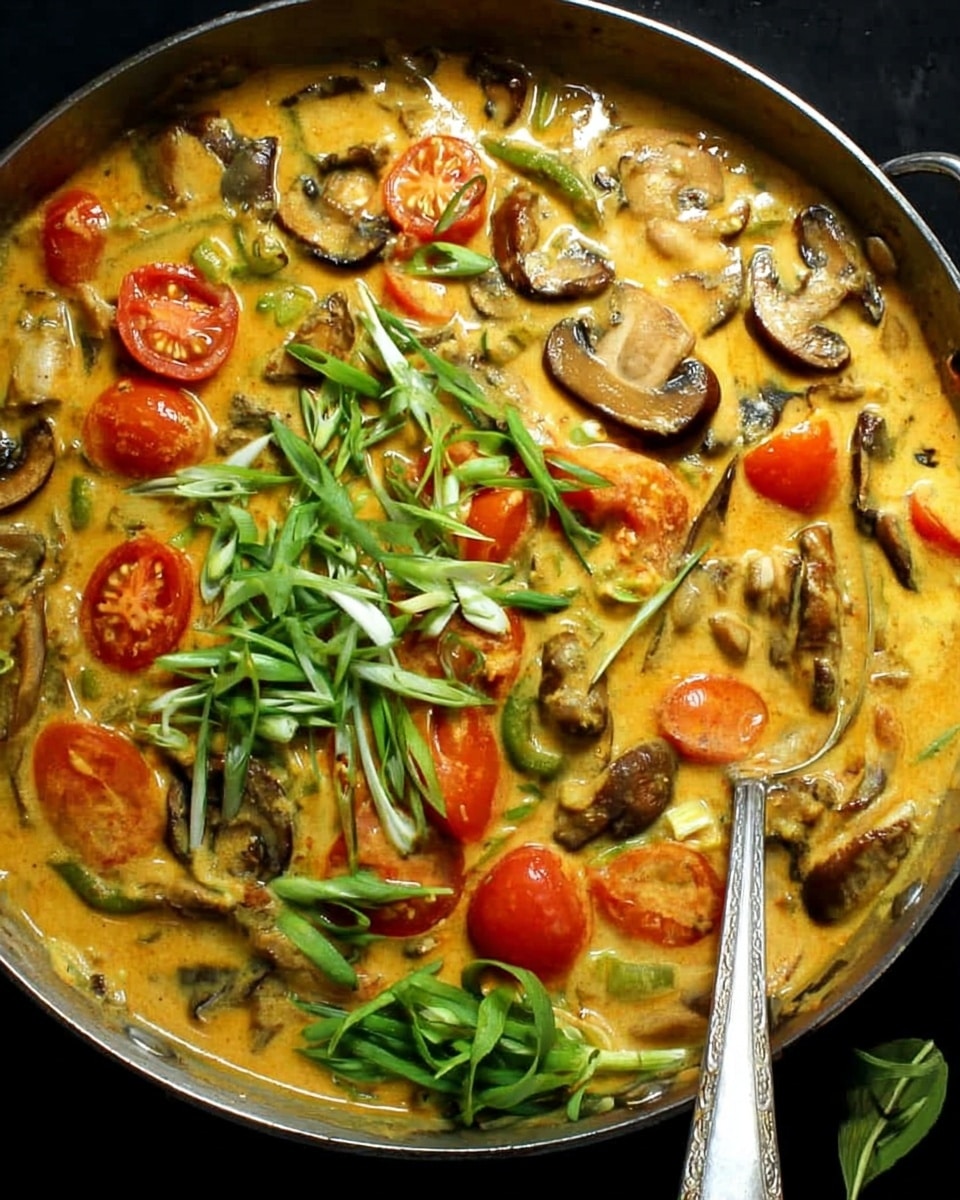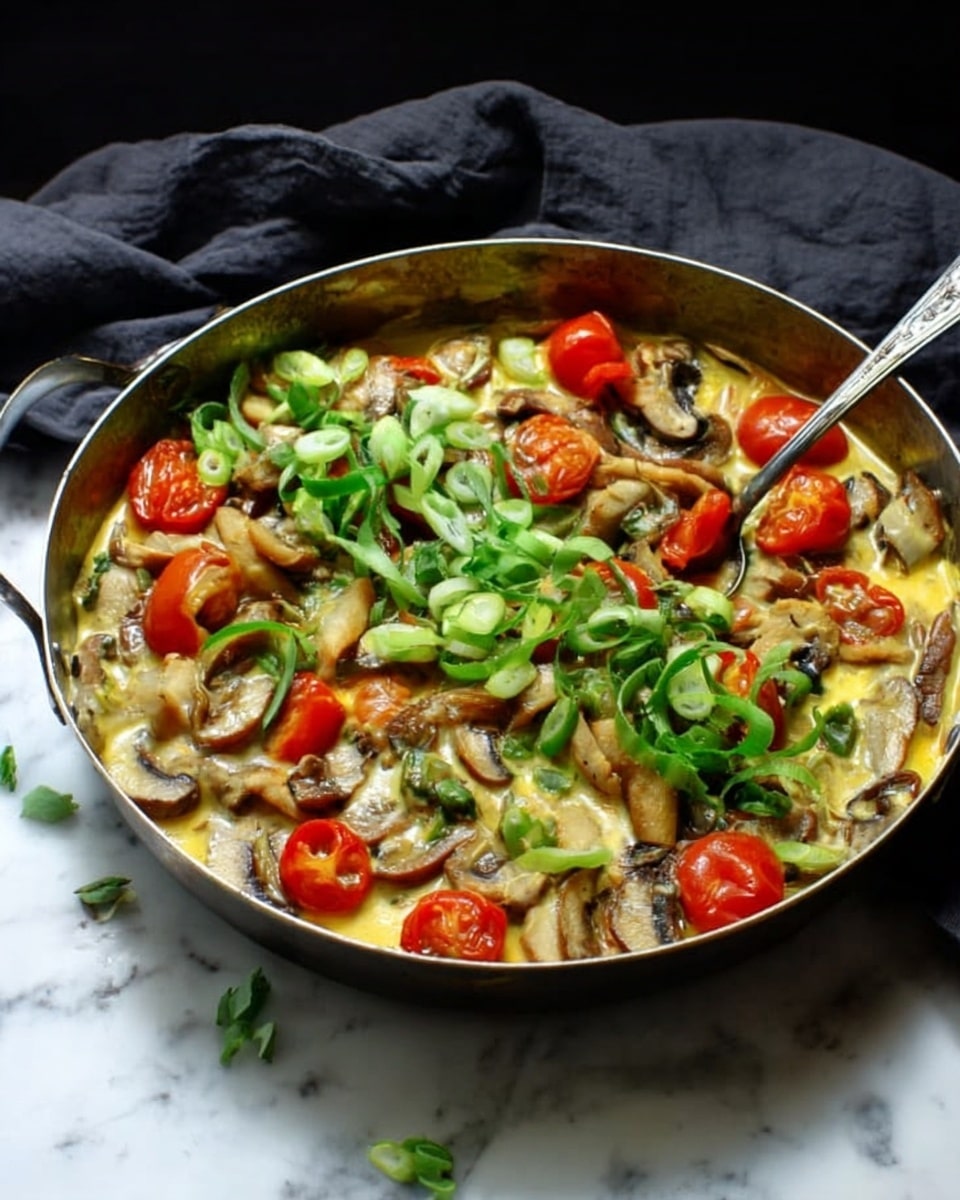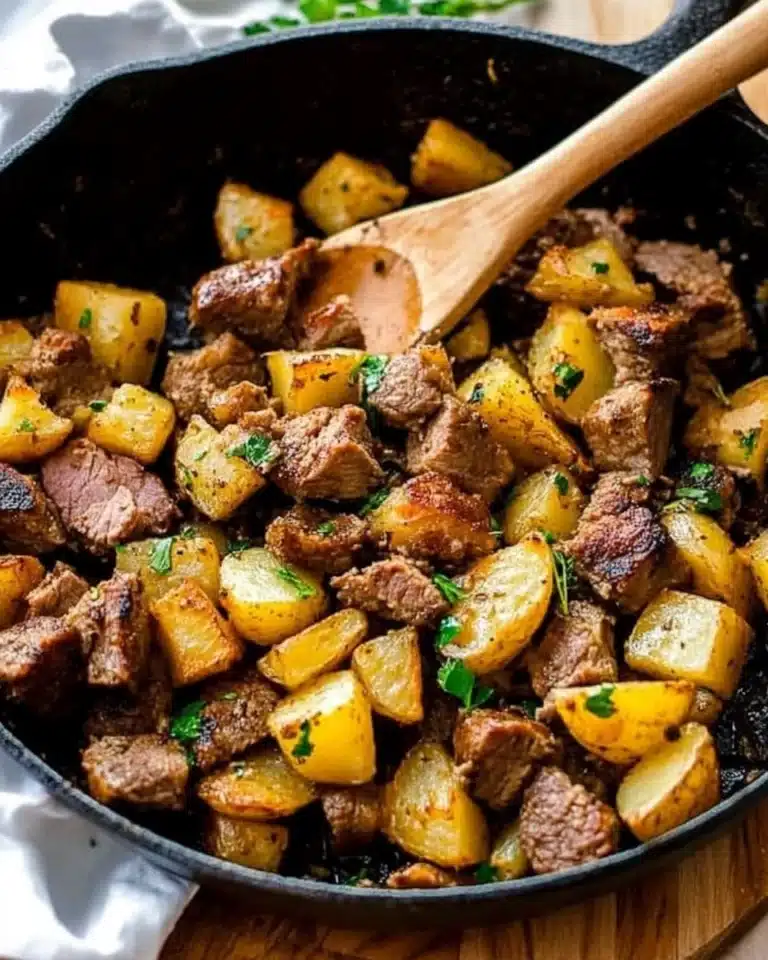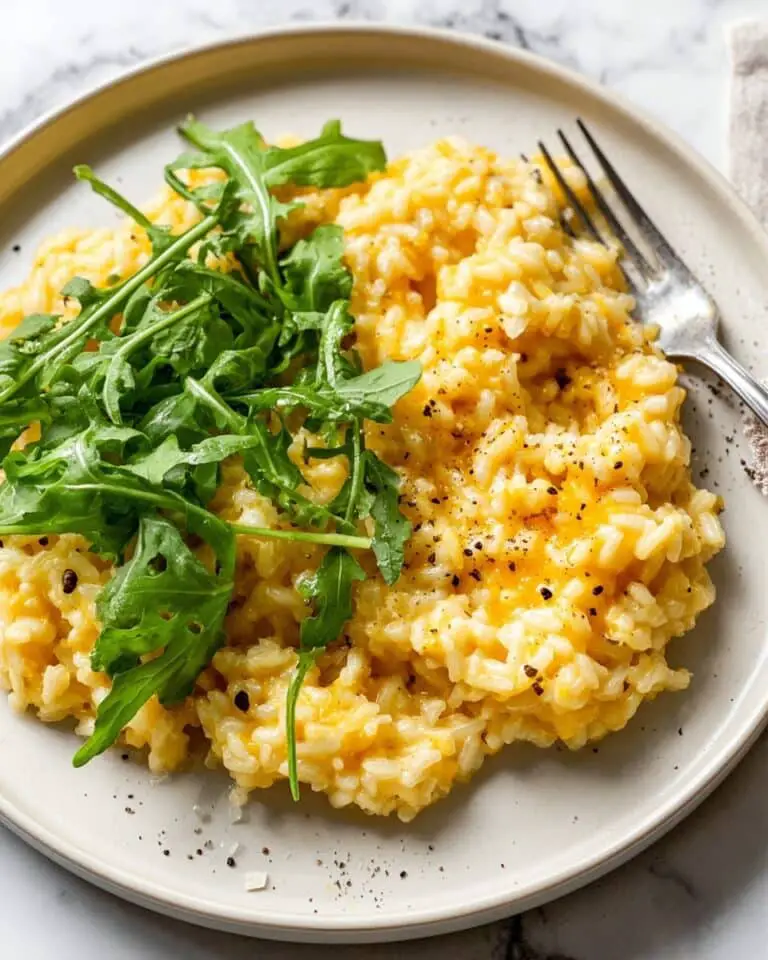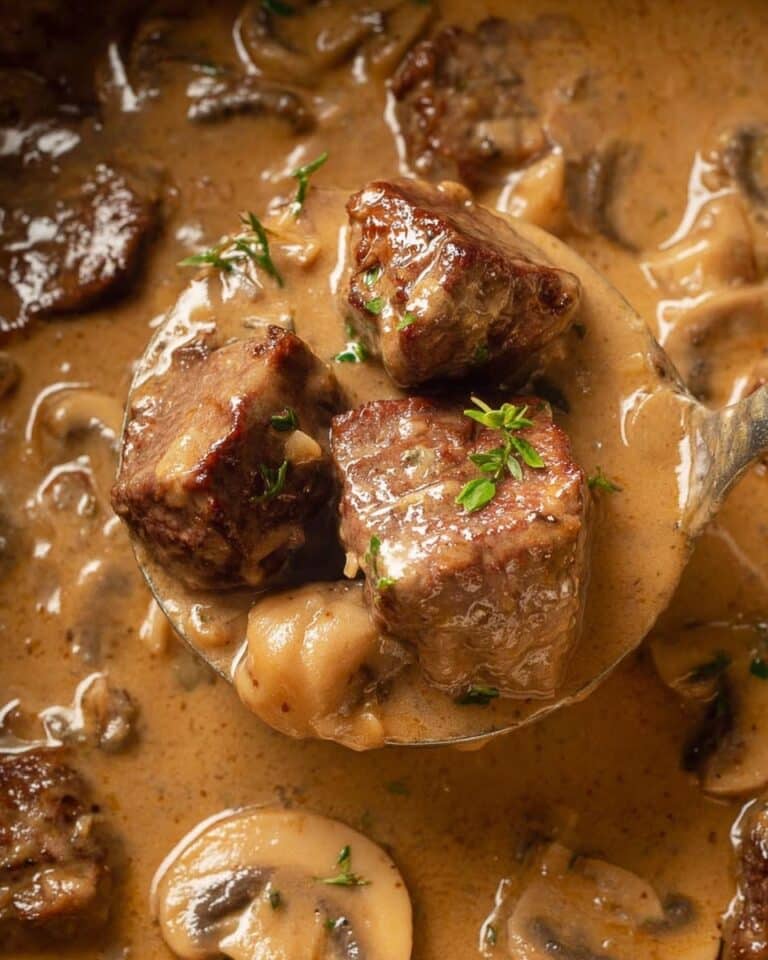If you’re craving a quick, vibrant, and soul-soothing meal, this 20-Minute Indian Vegetable Curry with Coconut Milk Recipe is going to become your new favorite go-to. I absolutely love how this curry packs a punch of flavors without taking hours, and the creamy coconut milk adds that luxurious touch that makes everyone ask for seconds. Whether you’re new to Indian cooking or a seasoned home chef looking for something speedy yet satisfying, stick around—I’ll walk you through every step to make it a total breeze.
Why You’ll Love This Recipe
- Speedy & Simple: This recipe truly takes just 20 minutes, perfect for busy weeknights when you want something homemade but fast.
- Flavorful & Balanced: The warm spices and fresh vegetables mingle effortlessly with creamy coconut milk for a comforting yet fresh taste.
- Flexible Ingredient List: You can mix and match veggies based on what’s in your fridge or what’s in season.
- Vegan & Nutrient-Packed: A totally plant-based, wholesome meal that leaves you feeling nourished and satisfied.
Ingredients You’ll Need
The magic of this 20-Minute Indian Vegetable Curry with Coconut Milk Recipe lies in how these simple veggies and spices come alive together. Each element adds layers—earthy mushrooms, sweet bell peppers, and spicy jalapeños blend beautifully with a fragrant spice mix. When shopping, choose fresh produce for the best flavors and coconut milk canned in a carton for creamy richness.
- Cremini or Button Mushrooms: I usually pick cremini for their meaty texture, but button mushrooms work just as well.
- Bell Pepper: Choose colorful ones to brighten your curry visually and taste-wise.
- Jalapeno Peppers: Deseed them if you want less heat, or leave the seeds for a nice kick.
- Fresh Ginger: Thin slices release just the right zing without overpowering the dish.
- Shallot: It’s a milder alternative to onion and adds a pleasant sweetness when sautéed.
- Avocado or Neutral Oil: Perfect for high-heat sautéing without altering the flavors.
- Black Mustard Seeds: They pop right in the oil and deliver that signature Indian aroma.
- Curry Leaves (Optional): Don’t skip if you find them! They add a uniquely fragrant and authentic touch.
- Turmeric: Offers that golden hue and anti-inflammatory benefits.
- Garam Masala: The soul of the curry’s flavor; fresh or well-stored works best.
- Paprika (Optional): Adds a deeper color and subtle smokiness.
- Canned Coconut Milk: Go for the full-fat canned kind, which creates a luscious curry base.
- Lemon Juice: Added at the end to brighten all the rich flavors.
- Cherry Tomatoes: I love how their slight sweetness balances the spices.
- Spring Onions: Fresh, crunchy, and colorful—they’re the perfect finishing touch.
Variations
I love how this curry invites creativity. Over time, I’ve swapped veggies and adjusted spices to keep things fresh and tailor the heat level to my family’s taste buds. Feel free to make this recipe your own—it’s easy and forgiving.
- Different Veggies: I’ve added cauliflower florets or green beans when mushrooms aren’t on hand, and each variation tastes fantastic.
- Heat Level: If you prefer mild, just omit the jalapeños or use milder peppers; if you like it spicy, keep the seeds or add a pinch of cayenne.
- Protein Boost: Toss in cooked chickpeas or tofu cubes to make it heartier for a filling meal.
- Spice Mix: Swap garam masala for your favorite curry powder blend to experiment with different flavor nuances.
How to Make 20-Minute Indian Vegetable Curry with Coconut Milk Recipe
Step 1: Bring the Aromatics to Life
Start by heating your oil in a large saucepan over medium heat. When it’s hot, toss in the black mustard seeds—they’ll start to sputter and crackle, which is such a satisfying sign your curry’s on its way to greatness. Immediately add the shallots, sliced ginger, jalapeños, and curry leaves if you’re using them. Season lightly with salt and pepper here to help draw out their flavors. Sauté everything for about 2 minutes until the shallots soften and become fragrant without browning. This step sets the flavor foundation, so watch closely and stir often.
Step 2: Cook the Veggies Till Tender
Next, add your bell peppers and mushrooms to the pan. Sauté for about 3 to 4 minutes, tossing occasionally. You’ll notice the veggies soften and release their moisture, which helps meld flavors later. This part is where the curry develops its wonderful texture—soft but not mushy veggies make all the difference. Don’t rush; let the veggies have their moment in the pan.
Step 3: Spice It Up and Add Coconut Milk
Now sprinkle the turmeric, garam masala (or curry powder), and paprika if you’re including it, onto the veggies. Stir everything together well so the spices toast lightly and coat the vegetables evenly. Pour in half the coconut milk and turn the heat up just a little to bring it to a gentle boil. Let the curry simmer for a couple of minutes, giving the flavors a chance to marry and the veggies to reach your preferred tenderness.
Step 4: Finish with Freshness
Lower the heat, stir in the remaining coconut milk, and adjust salt if needed. Heat it through gently—just warm, not boiling—to keep the coconut milk creamy and rich. Turn off the heat, then stir in fresh lemon juice, halved cherry tomatoes, and chopped spring onions. Adding these at the end brightens the dish beautifully with fresh zing and color. Your curry is ready to serve!
Pro Tips for Making 20-Minute Indian Vegetable Curry with Coconut Milk Recipe
- Toasting Mustard Seeds: Keep the oil hot but not smoking when adding mustard seeds to get that perfect pop without burning.
- Fresh Spices Matter: Use fresh garam masala or curry powder for maximum flavor; old or pre-ground spices lose their punch fast.
- Don’t Overcook Mushrooms: Mushrooms release a lot of water — cook until they’re just tender to avoid sogginess.
- Add Citrus at the End: Always stir in lemon juice or other acids off the heat to keep the bright flavors and prevent curdling of the coconut milk.
How to Serve 20-Minute Indian Vegetable Curry with Coconut Milk Recipe
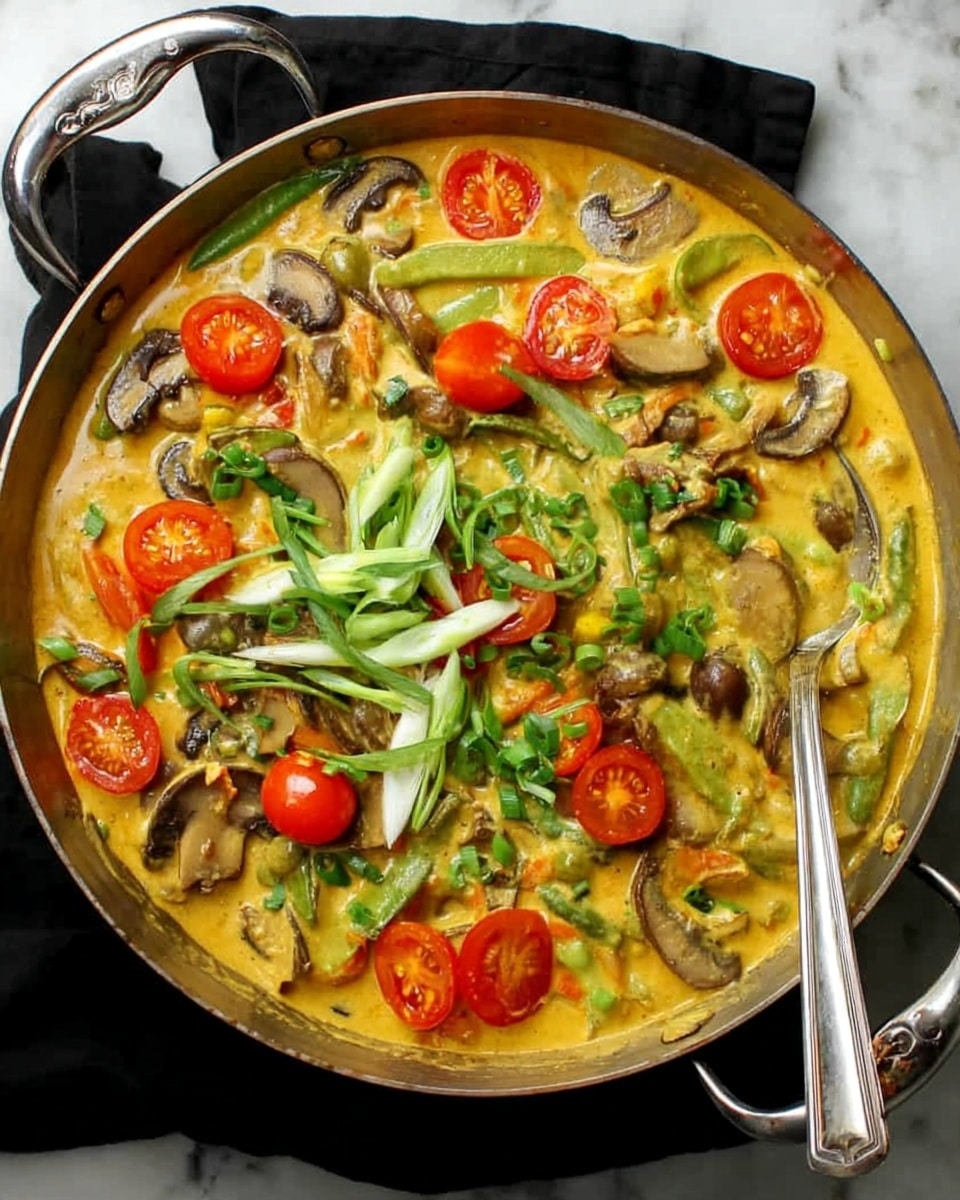
Garnishes
Personally, I never skip a sprinkle of fresh cilantro or chopped spring onions (also included in the recipe) right before serving. They add a lovely burst of color and freshness that balances the creamy curry. Sometimes I toss toasted cashews or a drizzle of coconut cream on top for extra indulgence—totally optional but delicious!
Side Dishes
I almost always serve this curry alongside fluffy basmati rice—that’s my family’s favorite pairing. You can also offer warm naan or roti for scooping up every last bit of sauce. For something different, try it with quinoa or even cauliflower rice to keep it light but still satisfying.
Creative Ways to Present
When I have company, I like to serve this curry in individual bowls, garnished with a wedge of lemon and a handful of chopped fresh herbs. Adding a colorful scattering of pomegranate seeds or edible flowers gives it a beautiful, festive look. Plus, serving it family-style makes for a warm, communal feel everyone enjoys.
Make Ahead and Storage
Storing Leftovers
I store leftovers in an airtight container in the fridge, ideally within 2 hours of cooking. The curry holds up really well for up to 3 days. Just give it a good stir before reheating to bring back that creamy texture.
Freezing
Freezing this curry is totally doable. I portion it out into freezer-safe containers and thaw overnight in the fridge. Keep in mind that the fresh tomatoes and spring onions can soften quite a bit after freezing, so I usually add fresh ones when reheating for best texture.
Reheating
I prefer reheating the curry gently on the stovetop over low-medium heat to avoid curdling the coconut milk. Add a splash of water or extra coconut milk if it seems too thick. You can also microwave it, but stir halfway through to ensure even warming.
FAQs
-
Can I use other vegetables instead of mushrooms and bell peppers?
Absolutely! This 20-Minute Indian Vegetable Curry with Coconut Milk Recipe is very flexible. Feel free to substitute with cauliflower, zucchini, green beans, or even eggplant. Just adjust cooking times slightly depending on the vegetable’s density so everything cooks evenly.
-
Is this curry spicy?
The heat level depends on your jalapeño pepper choice—removing the seeds makes it milder, while including them amps up the spice. You can always reduce or increase the amount, or omit it entirely for a gentle curry.
-
What’s the best way to store leftovers?
Store leftovers in an airtight container in the fridge for up to 3 days. Reheat gently to preserve the creamy coconut milk texture. Avoid reheating multiple times to keep it fresh and flavorful.
-
Can I make this curry gluten-free?
Yes! This recipe is naturally gluten-free since it relies on vegetables, spices, and coconut milk. Just ensure any curry powder or garam masala you use doesn’t contain gluten additives.
-
What can I serve with this curry to make it a complete meal?
Pair it with steamed basmati rice or warm whole wheat naan bread for a filling meal. Adding a side of lentils or chickpeas brings more protein and rounds out the plate perfectly.
Final Thoughts
This 20-Minute Indian Vegetable Curry with Coconut Milk Recipe has become a staple in my kitchen because it’s fast, flavorful, and endlessly adaptable. I love how it comes together quickly but still tastes like I spent hours fussing over it. If you want a cozy, nourishing meal that impresses without stress, you’ll enjoy this as much as I do. I really hope you give it a try—you might just find your new favorite weeknight dinner!
Print
20-Minute Indian Vegetable Curry with Coconut Milk Recipe
- Prep Time: 10 minutes
- Cook Time: 10 minutes
- Total Time: 20 minutes
- Yield: 4 servings
- Category: Main Course
- Method: Stovetop
- Cuisine: Indian
- Diet: Vegan
Description
This vibrant and creamy 20-minute Indian Vegetable Curry features mushrooms, bell peppers, and aromatic spices simmered in rich coconut milk. A quick and nutritious vegan dish that offers a perfect balance of colors and flavors, ideal for an easy weeknight dinner served with rice.
Ingredients
Vegetables
- 16 oz cremini mushrooms or button mushrooms (sliced)
- 1 large bell pepper (thinly sliced into 1/2-inch long pieces)
- 1 large or 2 small jalapeno peppers (deseeded and thinly sliced for less heat)
- 1-inch piece ginger (thinly sliced)
- 1 medium shallot (thinly sliced)
- 10 cherry tomatoes (halved)
- 4 spring onions (chopped)
Spices & Seasoning
- 1 tsp black mustard seeds
- 15-20 curry leaves (optional)
- 1/4 tsp turmeric powder
- 1-2 tsp garam masala or curry powder
- 1 tsp paprika (optional)
- Salt and ground black pepper to taste
Oils & Liquids
- 1 tsp avocado oil or any neutral oil
- 1 cup canned coconut milk
- 2 tbsp lemon juice
Instructions
- Heat the Oil and Temper Spices: Warm the oil in a large saucepan over medium heat. Add the mustard seeds and let them sputter and crackle, which releases their flavor. Then add the shallots, sliced ginger, jalapeno peppers, and curry leaves if using. Season with salt and pepper and sauté for a couple of minutes until the shallots begin to soften and become fragrant.
- Add Vegetables and Sauté: Incorporate the bell peppers and sliced mushrooms into the saucepan. Sauté the mixture for 3-4 minutes until the vegetables start to soften but still retain some bite.
- Spice and Simmer with Coconut Milk: Sprinkle turmeric, garam masala, and optional paprika on the vegetables. Stir well to combine. Pour in half of the coconut milk and bring the curry to a boil over medium-high heat, then simmer for a few minutes until the veggies are cooked to your preferred tenderness.
- Finish the Curry: Add the remaining coconut milk, adjust salt if needed, and gently warm through without boiling to maintain the creaminess. Turn off the heat and stir in the lemon juice, halved cherry tomatoes, and chopped spring onions for fresh flavor and color.
- Serve: Serve the curry hot or warm alongside steamed rice for a delicious and wholesome vegan meal.
Notes
- This recipe is versatile: feel free to substitute or add other seasonal vegetables like carrots, peas, or cauliflower to suit your taste and what you have on hand.
- Deseeding the jalapenos reduces heat while maintaining flavor; adjust according to your spice preference.
- Use canned coconut milk (not carton) for a richer, creamier texture.
- The curry leaves add authentic aroma but can be omitted if unavailable.
- Pair with basmati rice or naan for a complete traditional Indian meal.
Nutrition
- Serving Size: 1 serving
- Calories: 187 kcal
- Sugar: 6 g
- Sodium: 23 mg
- Fat: 14 g
- Saturated Fat: 12 g
- Unsaturated Fat: 2 g
- Trans Fat: 0 g
- Carbohydrates: 13 g
- Fiber: 3 g
- Protein: 6 g
- Cholesterol: 0 mg

